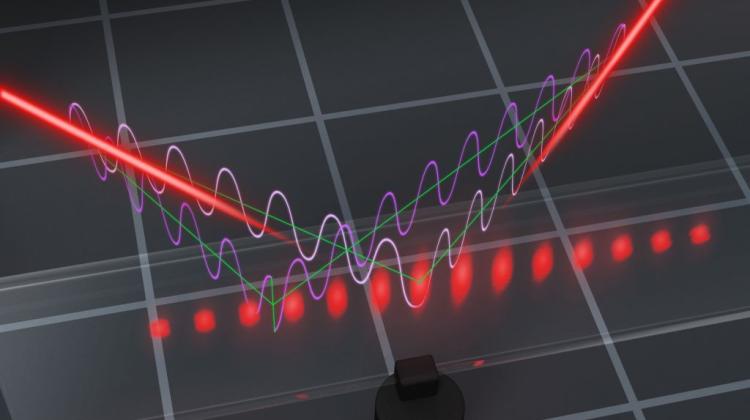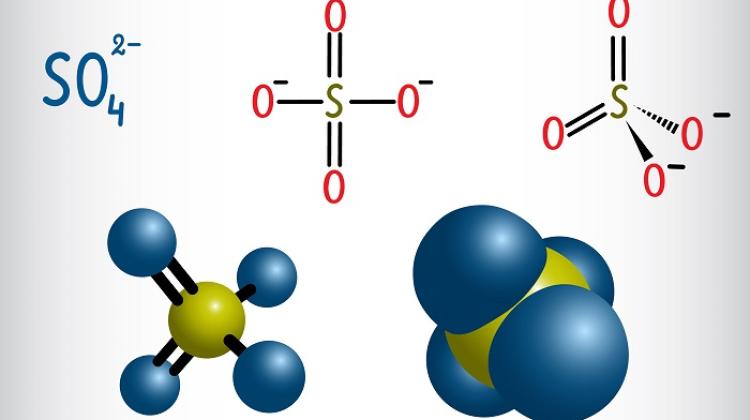Quantum reality more tangled than we thought

During the transfer of quantum information, nature has a lot of fantasy, showed physicists from Warsaw and Gdansk. Nature works like a mad courier who delivers packed vases in one piece only if they are blue. The quality of services depends on the features of the package.
Experiment with single photons, carried out by physicists from the Faculty of Physics, University of Warsaw and the Faculty of Applied Physics and Applied Mathematics, Gdańsk University of Technology, revealed another counterintuitive feature of the microworld. When nature sends a quantum object, the quantum value of the package (whether the object behaves like a wave or a particle) also depends on the properties seemingly unrelated to the transfer. The surprising findings have been published in the prestigious scientific journal "Nature Communications".
MAD COURIER
"Imagine you bought a number of glass vases in two different colours in an online shop. Each vase is shipped in a separate package. What would you say about the courier, who delivered all the parcels intact, and yet out of the box it would appear that the red vases are intact, and the blue ones in pieces?" - wrote the Faculty of Physics, University of Warsaw representatives in a release sent to PAP. They explained that similar mechanisms occurred in the quantum world. It turns out that this internal property that determines the "courier service quality" in the quantum world can be photon polarization.
LIGHT ON THE WAVE
One of the most amazing experiments, yet simple to carry out, is the experiment with interference or overlapping waves. When you direct the laser beam at the aperture with two slits, you will see the system of light and dark fringes. Physicists have long known that the interference fringes are visible even when individual particles, such as a single photon or electron, pass through the slits. It is assumed that a photon or electron behaves like a wave, which passes through both slits simultaneously and interferes with itself.
Everything changes when the measuring system allows, even only potentially, to determine the path of photon or electron - that is, to determine through which slit the particle has passed. When the information about the particle path leaks from the measuring system to the observer, the interference disappears instantly! Instead of interference fringes, a single bright spot appears behind the screen.
PHOTONS, LIKE VIEWS, ARE SOMETIMES POLARIZED
For the photons to interfere, they must have the same wavelength. Similarly, the electrons must have the same energy. But quantum particles also have many other properties, seemingly not associated with interference. For example, they can be polarized (the electric field can oscillate in a particular plane) or have different spin orientations (quantum property describing the dynamics of an object at rest).
"Until now, it has been mostly assumed that the additional properties of particles, such as spin or polarization, have no significant effect on the interference. We decided to look at the issue more closely and were surprised by the results " - said Prof. Konrad Banaszek from the Faculty of Physics, University of Warsaw.
PHOTON TWINS
The experiment of physicists from both universities began with the generation of heralded photons. "The name sounds discouraging, but the idea is simple - described Prof. Czesław Radzewicz from the University of Warsaw. - We generate photons in a process in which they must form in pairs. Later, when we register a single photon, we are certain that another photon has formed, whose properties such as emission direction and wavelength we can predict without measuring. In other words, we use one photon to herald the presence of another photon, undisturbed by measurements that determine its presence".
Researchers directed each heralded single photon into a simple interferometer made of two calcite crystals. In the first crystal, the photon would split, and then travel through both arms of the interferometer at the same time. In both arms, researchers disturbed the polarization of the photon (i.e., the plane in which the electric field oscillates), by introducing noise. In the second calcite, both photon paths met and the characteristic pattern of interference fringes formed - of course only if the system was not leaking information on the arm through which the photon was passing. The final stage of the experiment was to measure the interference fringes with silicon avalanche photodiodes.
EAVESDROP ON LIGHT?
"We found that by measuring the interference fringes we were able to determine whether during the transfer of information through the interferometer part of it got out. In other words, we can tell with certainty whether someone was eavesdropping on the information or not" - said Dr. Michał Karpiński of Oxford University, who built the experimental system and performed the measurements.
The experimental results revealed a new, surprising property of reality. It turned out that the polarization of photons, a property seemingly completely independent of interference, does affect it.
"It \'s a bit as if the quality of courier service, such as the integrity of the vase in a sealed package, depended on whether the vase was blue or red. In our world, the colour would not affect whether the vase broke or remained intact. But quantum courier delivers the parcel in a condition which also depends on its internal properties, seemingly not associated with interference" - said Prof. Paweł Horodecki (Gdańsk University of Technology).
The experiment results give physicists a new, more comprehensive look at the most fundamental properties of reality. But it also has practical significance for quantum cryptography. Warsaw and Gdańsk physicists did in fact manage to introduce an inequality, which allows to fairly accurately estimate the amount of information leaking out of the measuring system.
Research was funded by the 7th Framework Programme of the European Union and the TEAM project of the Foundation for Polish Science .
PAP - Science and Scholarship in Poland
lt/ mrt/
tr. RL
Przed dodaniem komentarza prosimy o zapoznanie z Regulaminem forum serwisu Nauka w Polsce.


















